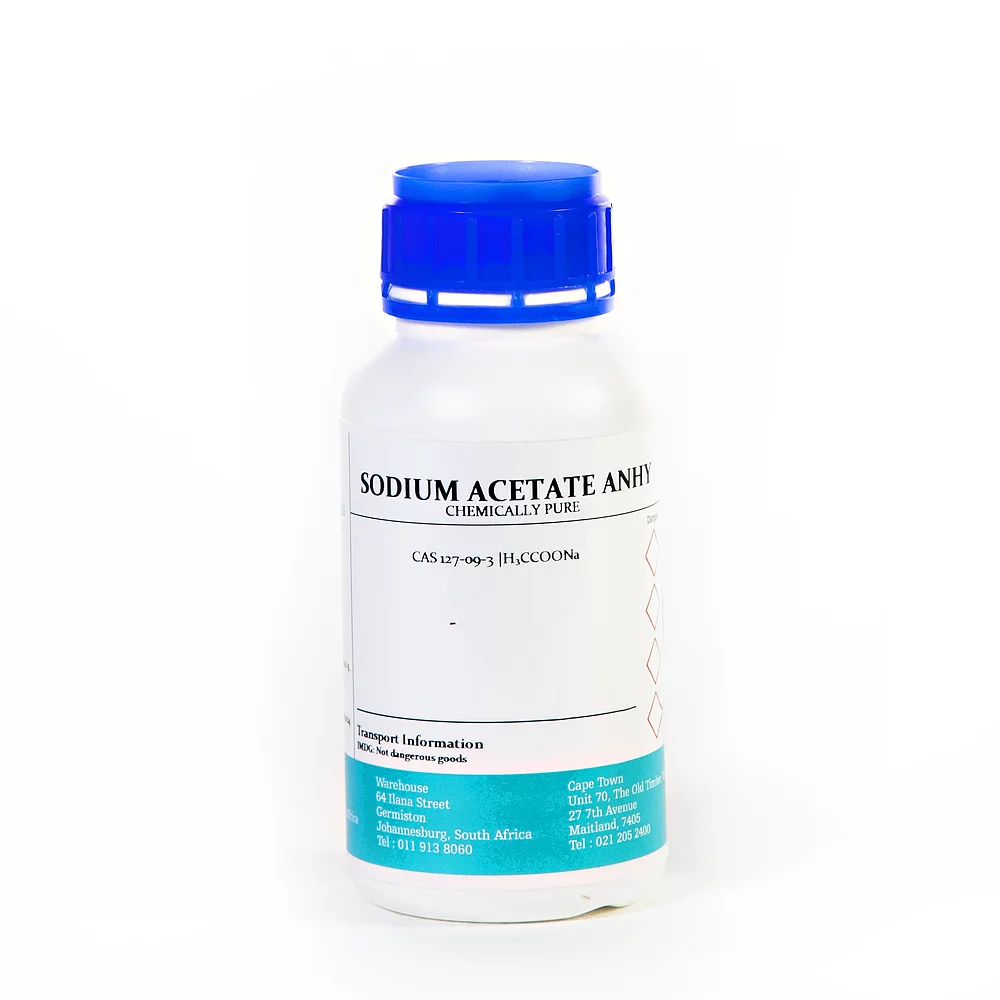Description
Sodium Acetate: A Versatile Compound Shaping Industries and Everyday Life
Sodium acetate, also known as sodium ethanoate, is a chemical compound with the formula CH3COONa. While it might sound complex, this unassuming salt plays a crucial role in a surprising range of applications, touching everything from food preservation to heating pads and even laboratory experiments.
A Closer Look at Sodium Acetate’s Properties:
Sodium acetate is a white, crystalline solid that’s highly soluble in water. It’s the sodium salt of acetic acid, commonly known as vinegar, and possesses a slightly vinegary odor. What makes sodium acetate truly remarkable is its ability to act as a buffering agent, meaning it can resist changes in pH, and its capacity to form supersaturated solutions that readily crystallize upon disturbance. These properties underpin its diverse functionalities.
A Culinary Champion: Food Preservation and Flavor Enhancement:
One of the most common uses of sodium acetate is in the food industry as a preservative and flavoring agent. It’s often added to snacks, processed meats, and other food products to inhibit the growth of microorganisms and extend shelf life. Its slightly sour taste can also enhance the overall flavor profile of certain foods. Along with its counterpart, acetic acid, it’s often found in vinegar-flavored potato chips, contributing to that signature salty, tangy taste.
Instant Warmth and Comfort: The Magic of “Hot Ice”:
Perhaps the most captivating application of sodium acetate is its use in reusable hand warmers and heating pads. These devices contain a supersaturated solution of sodium acetate. Bending a small metal disc inside the pouch provides a nucleation point, triggering rapid crystallization of the sodium acetate. This crystallization process is exothermic, meaning it releases heat, providing instant warmth. These hand warmers can be “recharged” by boiling them in water, which dissolves the sodium acetate back into a supersaturated solution. Upon cooling, the solution is ready for another round of comforting warmth.
Lab Workhorse: Buffering Agent and More:
Beyond its roles in food and warmth, sodium acetate is a valuable tool in the laboratory. Its buffering capability makes it essential in maintaining stable pH conditions in various biochemical reactions and experiments. It’s frequently used in chromatography, electrophoresis, and DNA purification protocols. Sodium acetate’s high solubility and affordability further contribute to its popularity in research settings.
Textile Industry Applications:
The versality of Sodium Acetate has also led it to be a valuable tool in the textile industries. It is used in the textile industry for the purpose of neutralizing sulfuric acid waste streams and as a photoresist while using aniline dyes.
Beyond the Familiar: Emerging Applications:
Researchers are constantly exploring new avenues for utilizing sodium acetate. Some promising areas include:
- Concrete sealant: Studies have shown that sodium acetate can be used to mitigate water damage to concrete and can act as a more environmentally friendly option in comparison to epoxy.
- De-icing agent: As a less corrosive alternative to traditional road salt, sodium acetate is being investigated for its potential as a de-icing agent, particularly in environmentally sensitive areas. While more expensive, its reduced impact on infrastructure and ecosystems makes it a worthwhile consideration.
- Medical applications: Research is underway to explore sodium acetate’s potential role in regulating electrolyte balance and treating metabolic acidosis.
A Compound with Enduring Relevance:
Sodium acetate is a testament to the power of chemistry in shaping our daily lives. From preserving our food and providing instant warmth to facilitating scientific advancements, this simple compound has a profound and enduring impact. As research continues to unveil its potential, we can expect to see sodium acetate play an even greater role in various industries and applications in the years to come.
















Reviews
There are no reviews yet.